How to cook tuna steak
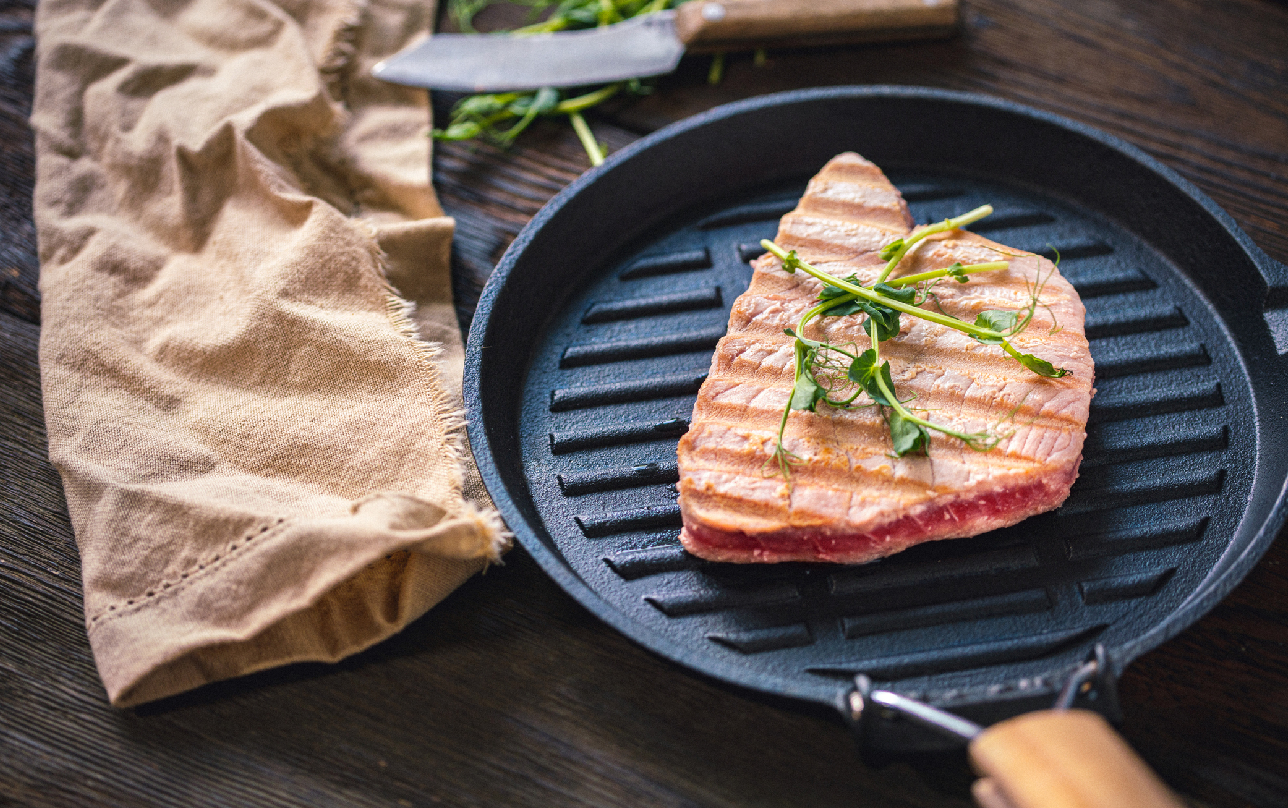

We have useful advice on where to source the best quality tuna, and our favourite cooking methods, along with tasty recipes to boot.
Tuna is a fish unlike any other, a staple ingredient along the Mediterranean and particularly favoured in Japan for sushi. It has a distinct deep red colour, unique flavour, and a lovely ‘meaty’ texture. It’s great with a fresh salad, or tossed with noodles, like in our soy-cured tuna noodles recipe, and it even makes a fabulous addition to a summer BBQ.
There are a number of different cuts of tuna, just like meat, and a tuna steak is taken from the top of the fish, this is also known as the back meat. In total, there are 15 species of tuna in the sea, which range from possibly the most expensive fish in the world (bluefin tuna), to just about the cheapest.
Tuna is a very oily fish, rich in omega-3 fatty acids, making it a healthy choice for us to eat, however, there is a slight downside to this. Because of that oil content, tuna tends to spoil a lot sooner than other fish, so be sure to buy as fresh as you can.
*Buying tuna steaks *How to prepare tuna steak *How to cook tuna steak in a pan *How to cook tuna steak in the oven *What temperature should you cook tuna steak to? *How to store tuna steak *How to cook tuna steak from frozen *What to eat with tuna steak *Our favourite tuna steak recipes
Buying tuna steaks

When choosing what fillets to buy, you want to look for moist, firm flesh and an even colour. Avoid fillets with any brown spots and it should be odorless, it definitely shouldn’t have a fishy smell.
We would recommend buying tuna from your local fishmonger over a supermarket for quality and freshness. It's also with great importance that you shop responsibly and make sustainable choices. Tuna is being dangerously overfished commercially, to the point where some species are on the brink of extinction. We advise buying line-caught tuna; this is also beneficial to other marine life as it can be carefully aimed to catch tuna; avoiding other animals, such as dolphins, sharks, and sea turtles, which are just some of the victims of commercial trawling.
Parenting advice, hot topics, best buys and family finance tips delivered straight to your inbox.
We always advise buying fish that displays the blue MSC (Marine Stewardship Council) label, however in other countries, this can be different, so we recommend doing a little research.
How to prepare tuna steak
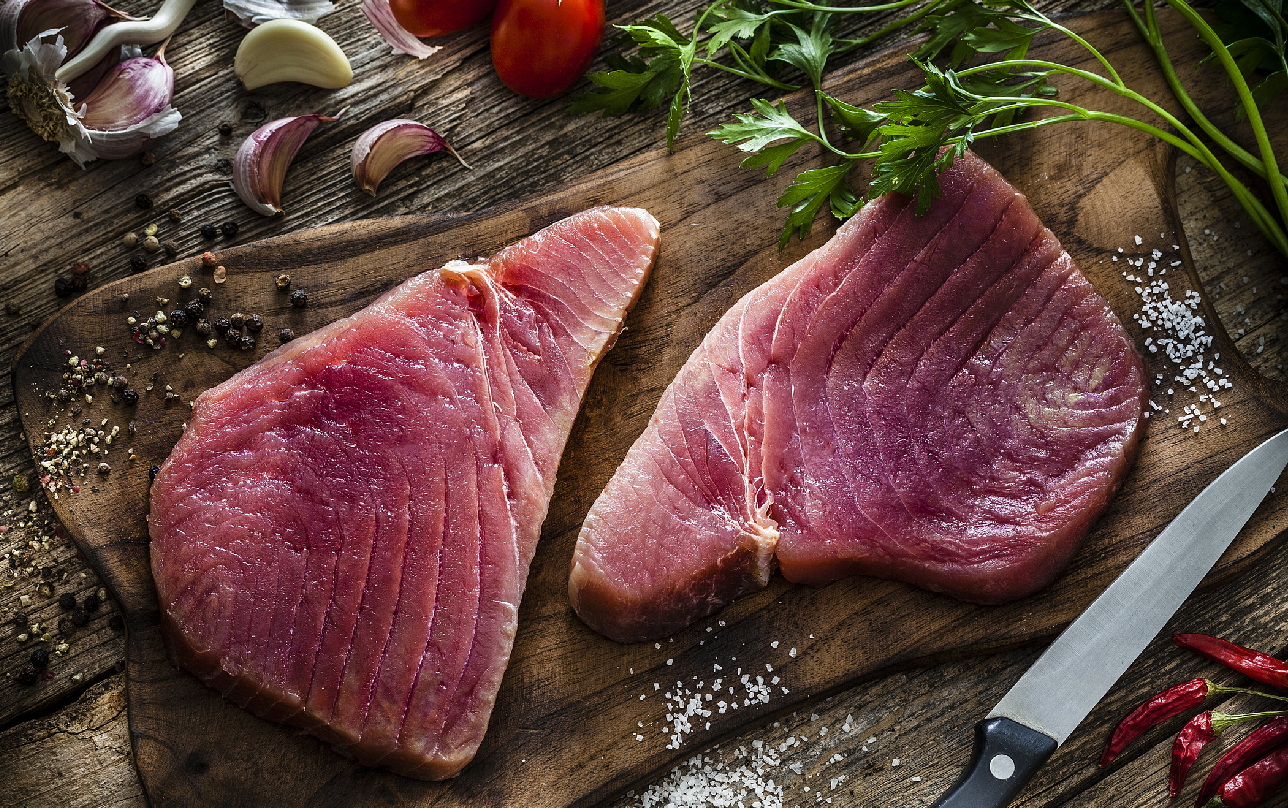
There is very little preparation when it comes to tuna, as most of this is carried out even before the fish reaches your fishmonger. Typically, tuna comes in ready-cut steaks or in a loin to cut yourself.
To avoid overcooking, each steak should be no less than 2cm thick, so be aware of this when buying steaks.
How to cook tuna steak in a pan
Being a much ‘meatier’ fish, tuna should really be cooked more like a piece of beef or venison, than how you would normally cook fish. It should be beautifully seared and caramelised on the outside, yet left nice and pink in the middle.
Pan-fried tuna steak
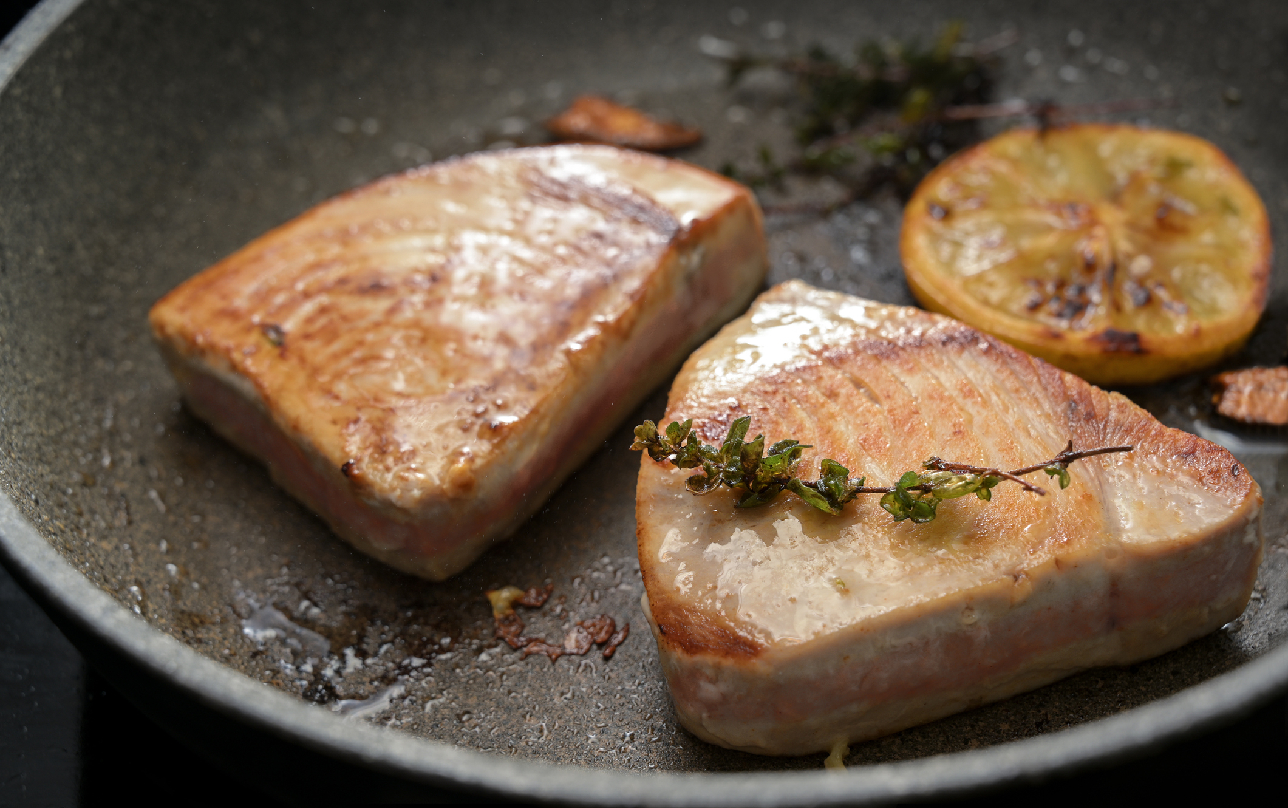
Ingredients
- 2 line-caught tuna fillets, 2 cm thick
- Olive oil
- Sea salt flakes and cracked black pepper
- Squeeze of lemon
Method
- Drizzle olive oil over each steak and season with salt and pepper.
- Heat a non-stick frying pan over high heat and cook the tuna for 1½ mins on each side before removing it from the pan. Drizzle with a little more oil, a squeeze of lemon, and rest for a few mins before serving.
- The steaks really don’t need much time at all. You can gauge how they’re cooking on the sides, but be aware that they will continue to cook while resting so don’t overcook.
Griddled tuna steak

Ingredients
- 2 line-caught tuna fillets, 2 cm thick
- Olive oil
- Sea salt flakes and cracked black pepper
- Squeeze of lemon
Method
- If you’re looking for those desirable char marks, then you need the help of a griddle pan.
- As with pan-frying, drizzle olive oil over each steak and season with salt and pepper.
- Heat the griddle over high heat and cook the tuna for 1½ mins on each side before removing it from the pan. Drizzle with a little more oil, a squeeze of lemon, and rest for a few mins before serving.
- You can rotate the fillets halfway through cooking on each side if you wish to have a criss-cross pattern on top.
How to cook tuna steak in the oven
If you prefer to cook your tuna steaks a little more, then you can finish the cooking process in the oven - but time is still crucial. Tuna can go from perfectly cooked, to dry and tough in no time.
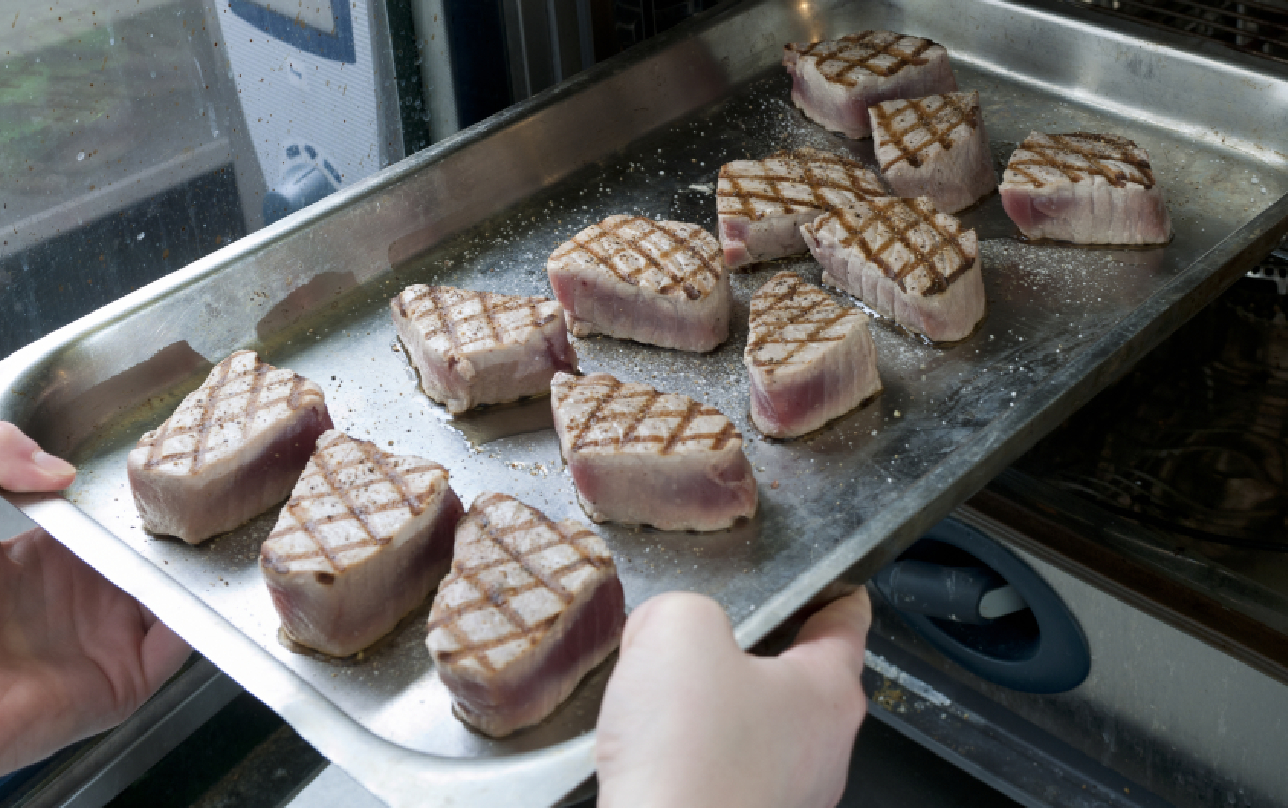
Ingredients
- 2 line-caught tuna fillets, 2 cm thick
- Olive oil
- Sea salt flakes and cracked black pepper
- Squeeze of lemon
Method
- Preheat the oven to 200C/Gas 6 and place a non-stick frying pan over very high heat.
- Drizzle olive oil over each steak and season with salt and pepper.
- Fry the tuna for 30-45 seconds on each side before removing it from the pan. Place on a baking tray and finish cooking in the oven for 1½-2 mins. This allows the heat to penetrate the center of the steak, but the short cooking time still allows the tuna to be moist.
- Remove from the oven and drizzle with more oil and a squeeze of lemon and rest for a few mins before serving.
What temperature should you cook tuna steak to?
Good quality tuna is usually considered ‘sashimi grade’ meaning it’s used for sushi and sashimi and perfectly fine to eat raw. If you’re not sure if your tuna is sashimi grade and you want to cook it, the internal temperature for medium-rare tuna should be 62-63 C.
How to store tuna steak
Tuna is best served fresh, so we would recommend buying it on the day you intend to eat it. Keep it refrigerated until you’re ready to cook it.
If you’re buying fresh tuna, then it would be perfectly fine to freeze for up to three months, however, if you’re buying from a supermarket, chances are it has already been frozen and thawed, so refreezing isn’t recommended.
Once cooked, store any leftovers in the fridge and eat within three days, or freeze for up to three months. Thaw fully in the fridge overnight before consuming or reheating.
How to cook tuna steak from frozen
As well as fresh tuna, you can also purchase frozen steaks too. These will be considerably cheaper as well. If cooking frozen tuna steaks, we would recommend defrosting fully beforehand (despite what the packet instructions say), as cooking from frozen will dry out the fish. Keep the steak frozen, only defrosting what you need, and when defrosted, do not refreeze.
What to eat with tuna steak
Tuna is a robust and versatile fish that can stand to take on some really strong flavours. It works well in a variety of Asian cuisines as it can hold its own against a number of spices.
You can keep it simple and drizzle with a fresh vinaigrette and new potatoes. You could also make a delicious salsa verde and serve it with roasted veg. Tuna also pairs nicely with fresh citrus fruits and fragrant herbs, hence being such a popular choice in Mediterranean countries.
Another popular way of eating tuna is ceviche - where the fish is cooked in the acid of citrus fruit. Check out our recipe for tostadas and tuna ceviche.
Our favourite tuna steak recipes
Poached egg salad Nicoise

Get the recipe: Poached egg salad Nicoise
Mashed peas and spinach with grilled tuna
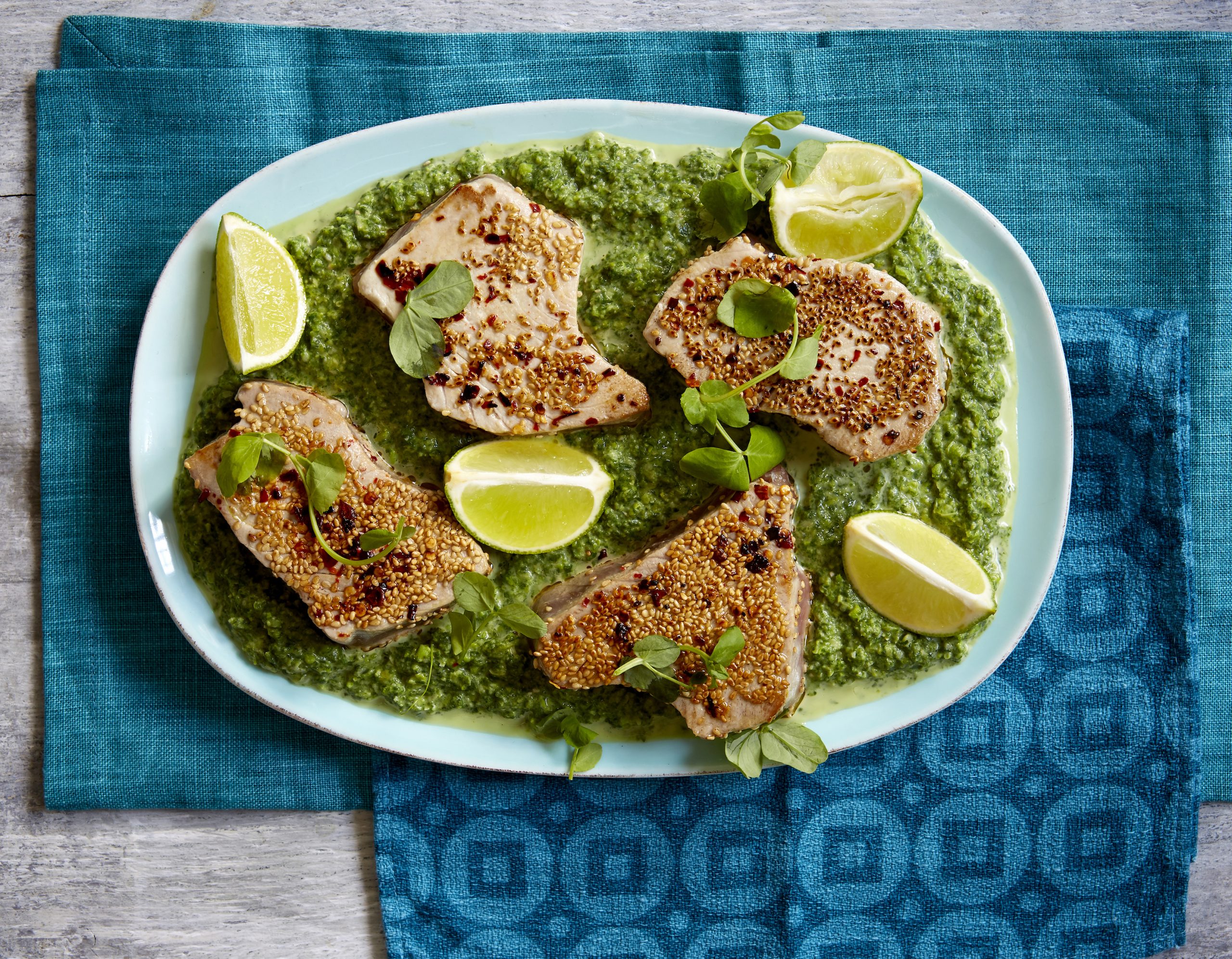
Get the recipe: Mashed peas and spinach with grilled tuna
Seared tuna with lime & coriander salsa
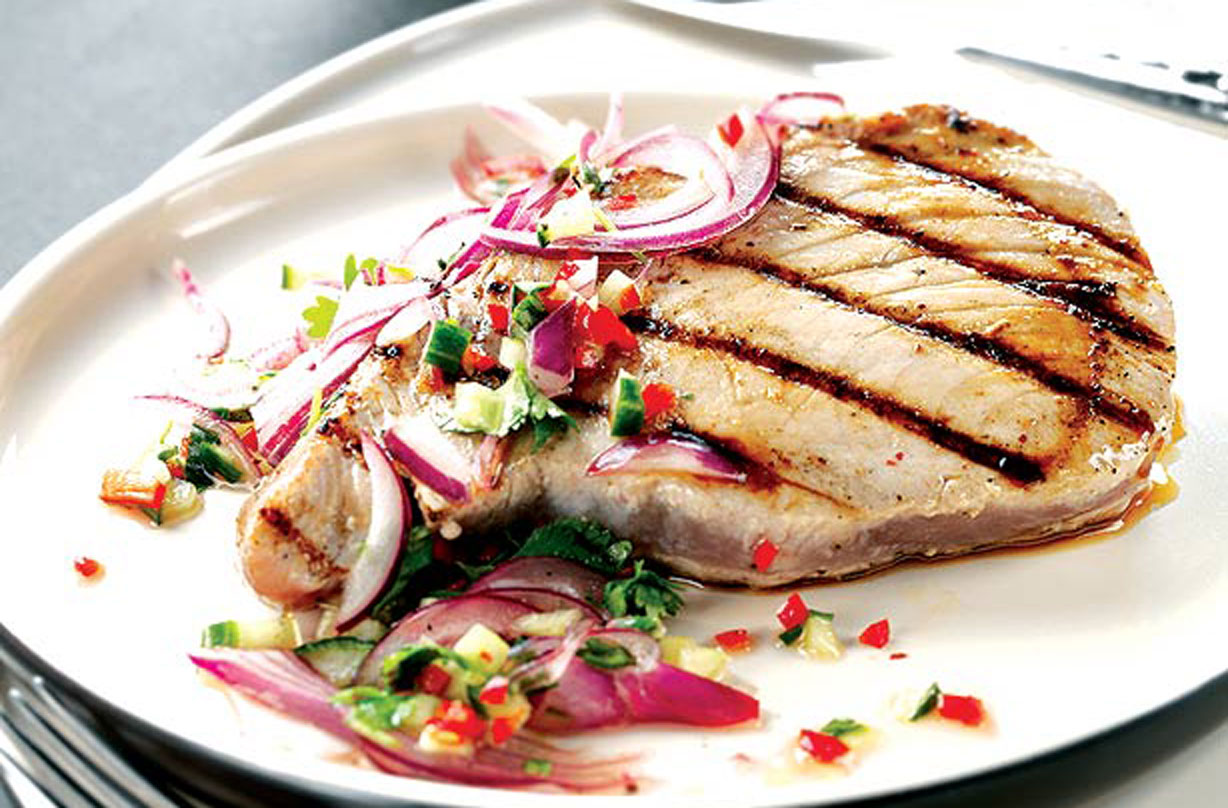
Get the recipe: Seared tuna with lime & coriander salsa
Tuna with nectarine salsa
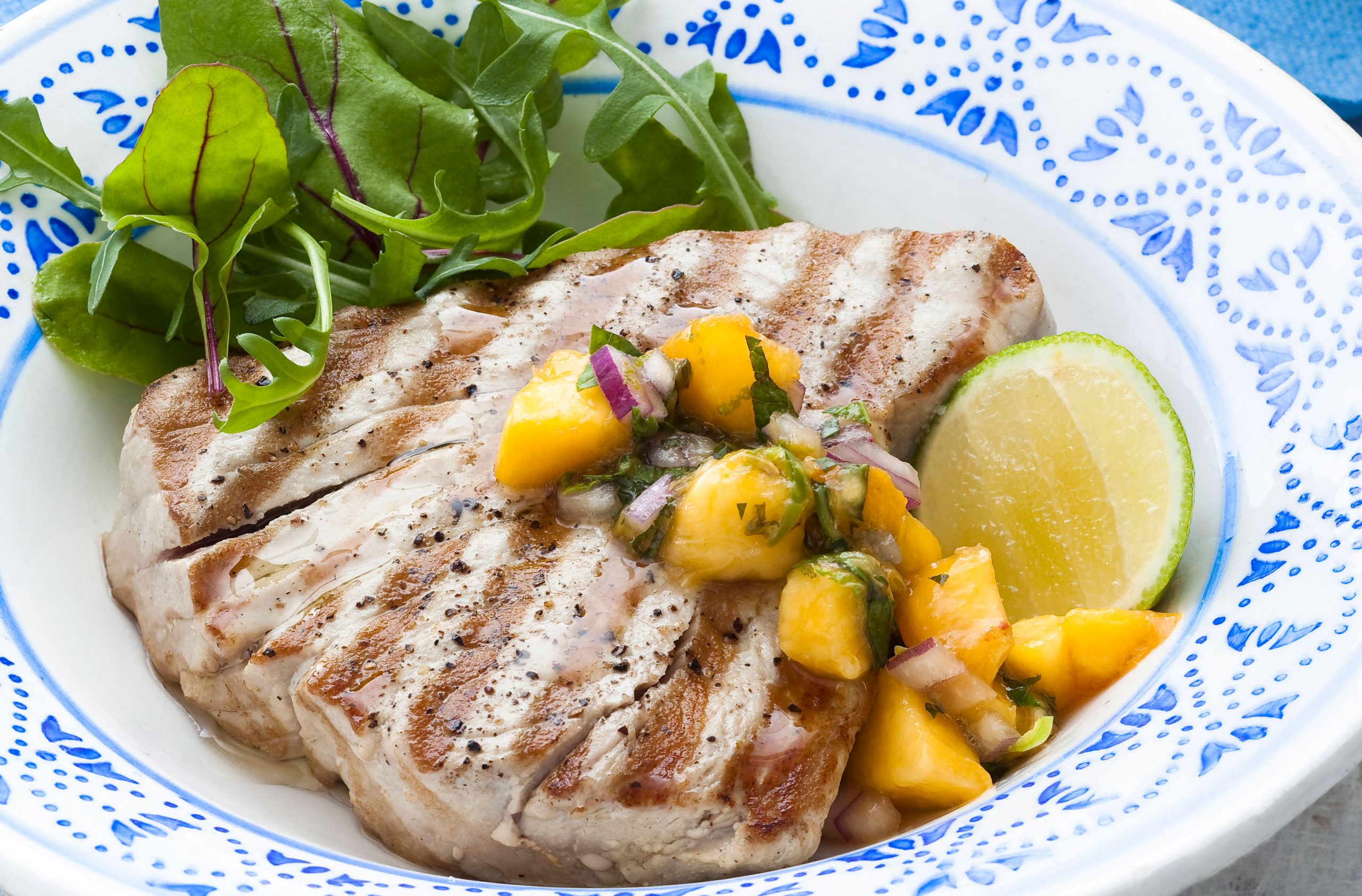
Get the recipe: Tuna with nectarine salsa
Tuna with grapefruit and beetroot salad

Get the recipe: Tuna with grapefruit and beetroot salad
Honey and soy-glazed tuna

Get the recipe: Honey and soy-glazed tuna

With over 12 years of experience, arts graduate Keiron turned to food to channel his creativity, specifically cake decorating. Keiron set up his wedding cake business in 2015. And, in late 2016 won a scholarship at the world-renowned culinary institute - Le Cordon Bleu, London, where he studied the art of French Pâtisserie. He's worked in some of London’s finest 5-star hotels, collecting a wealth of knowledge along the way. As a Food Writer and Stylist food isn’t just a job, it truly is Keiron's passion.